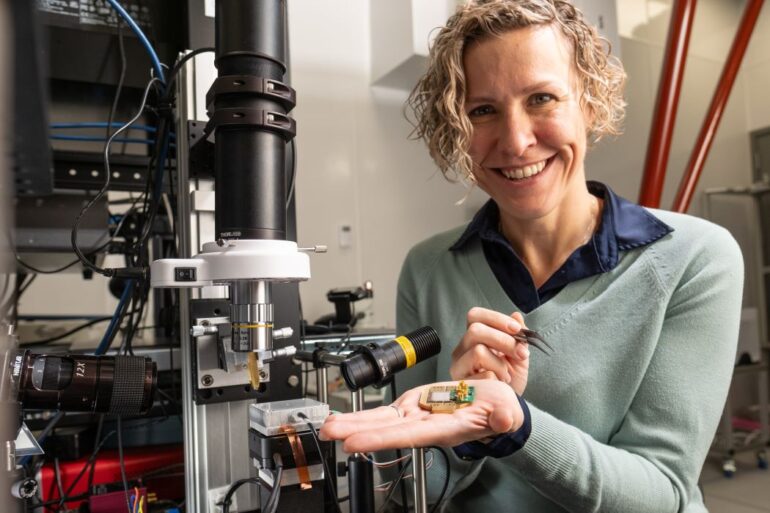Vancouver-based quantum startup Photonic has published a paper detailing a new quantum error correction method that it says requires fewer quantum bits (qubits) than previous methods.
The breakthrough comes in the form of a new family of Quantum Low-Density Parity Check (QLDPC) codes that Photonic is calling “Subsystem Hypergraph Product Simplex” codes (SHYPS).
“The quantum field must now be divided into those whose hardware can run these new codes, and those who can’t.”
David Shaw
Global Quantum Intelligence
Photonic said that QLDPC codes have long been predicted to reduce qubit overheads, but no one had discovered how to perform quantum logic with them.
With the advent of SHYPS, Photonic co-founder and chief quantum officer Stephanie Simmons claims quantum algorithms can use dramatically fewer physical qubits while running—perhaps as low as 20 times less.
“Unlocking the quantum logic of high-performance QLDPC codes has been the holy grail of quantum error correction R&D for decades, and one of the obstacles to cost-effective quantum computing at scale,” Simmons said in a statement. “We’re excited to share these milestone results which have moved the goalposts for useful quantum computing 20 times closer.”
Photonic said the codes have been stress tested to demonstrate that the logic works in practice, not just in theory, but warned the patent-pending SHYPS code has specific high connectivity hardware requirements for implementation that not every approach to quantum computing can deliver. Specifically, SHYPS works best with a “non-local” connectivity approach, meaning qubits connect to other qubits that are not situated near each other, versus a “nearest-neighbour” connectivity approach, which works just as it sounds.
RELATED: Xanadu claims networking breakthrough with new photonic quantum computer Aurora
David Shaw, a lead analyst with industry group Global Quantum Intelligence, said that the new work “knocked it out of the park.”
“The quantum field must now be divided into those whose hardware can run these new codes, and those who can’t,” Shaw said. “We’re going to see a race between players that invest in the scarce skills required for in-house code innovation, and those that seek to be fast followers.”
Photonic marks yet another Canadian quantum company announcing a technical stride. Just a few weeks ago, Toronto-based quantum computing company Xanadu claimed it had figured out how to network quantum computers together, another one of the key challenges facing the industry.
Photonic was founded in 2016 by Simmons, who is also a co-chair of Canada’s National Quantum Strategy Advisory Board, and Michael Thewalt, a physics professor at Simon Fraser University. The startup raised $137-million CAD ($100 million USD) from a pool of investors that included strategic partner Microsoft in November 2023.
Feature image courtesy Photonic via its website.


